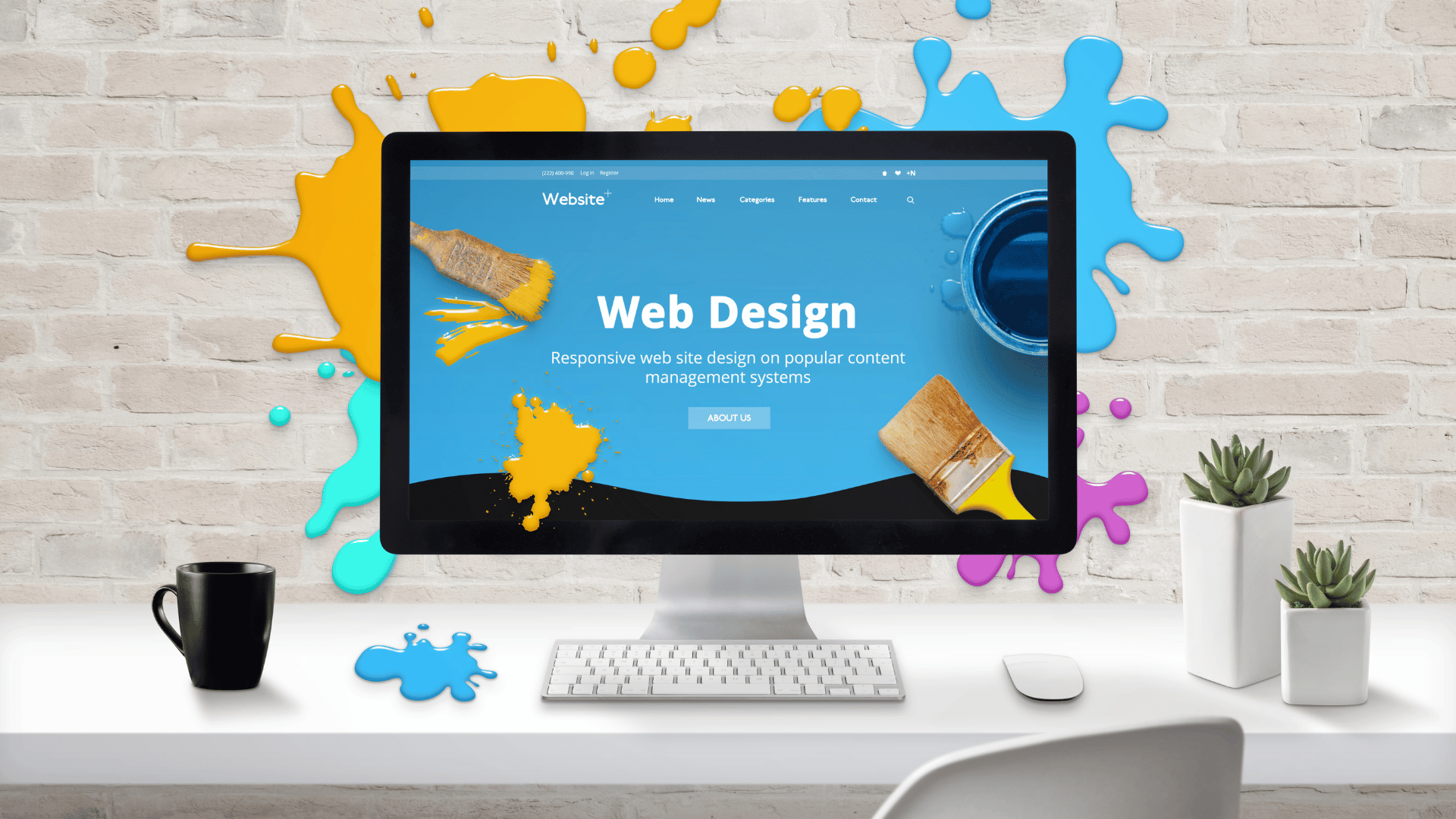The Value of User Experience in Reliable Web Design Approaches
User experience (UX) works as a foundation in effective web design methods. It shapes just how users interact with a website, influencing their contentment and likelihood of returning. A well-designed UX can boost involvement via instinctive navigating and responsive designs. Neglecting these elements may lead to frustration and enhanced bounce prices. Recognizing the details of UX is vital for developers aiming to develop engaging electronic experiences that resonate with diverse audiences. What aspects genuinely drive effective user involvement?
Recognizing User Experience and Its Influence On Layout
Although user experience (UX) is usually perceived as a mere element of web design, it basically forms how users engage with an internet site. UX incorporates all facets of the user's interaction, consisting of functionality, accessibility, and total complete satisfaction. A favorable UX fosters interaction, motivating customers to check out the site and return in the future. Alternatively, an adverse experience can bring about frustration, causing high bounce rates and shed opportunities for conversion.
Style aspects like format, content, and navigation organization play critical functions fit this experience. Efficient UX style prepares for user requirements and choices, making certain that information is aesthetically appealing and easily available. In addition, understanding user habits through analytics can offer beneficial insights, notifying style choices that improve functionality. Ultimately, an extensive understanding of UX enables designers to create websites that not just attract users however also advertise significant interactions that line up with company objectives and user expectations.
Trick Concepts of Reliable User Experience
Effective user experience rests on a number of essential principles that enhance web site capability and interaction. User-friendly navigating layout, responsive design fundamentals, and the value of aesthetic power structure are vital aspects that add to a seamless communication in between users and web material. Understanding these concepts permits designers to develop more easily accessible and user-friendly digital atmospheres.
User-friendly Navigating Design
User-friendly navigating style offers as a crucial entrance to their overall experience when customers encounter a web site. Reliable navigation permits customers to easily situate the details they look for, improving their interaction with the website. Key concepts include clear labeling, sensible organization, and consistent placement of navigation components. Tags ought to be simple, permitting customers to predict the content they will discover. A well-structured pecking order helps users recognize the relationship between various sections, assisting them through the website effortlessly. Furthermore, receptive food selections and quickly obtainable links contribute to a liquid experience across gadgets. By prioritizing instinctive navigating, developers can greatly decrease user stress and increase interaction, ultimately promoting a favorable understanding of the website and its content.
Receptive Design Fundamentals
A well-structured navigating system naturally brings about the demand for a receptive design, which is vital in today's varied digital landscape. A responsive format guarantees that websites feature effortlessly across various tools, consisting of tablet computers, desktops, and mobile phones. This adaptability improves user experience by enabling material to be quickly accessible and visually meaningful, no matter display dimension. Secret principles of responsive style include liquid grids, adaptable photos, and media questions, which assist in excellent viewing. Additionally, prioritizing touch-friendly components boosts interaction on mobile phones. By carrying out a responsive format, designers can fit individuals' demands, lessen bounce rates, and increase engagement. Ultimately, a well-executed receptive style cultivates a positive user experience, encouraging site visitors to explore the internet site better.
Visual Power Structure Relevance
Aesthetic pecking order plays a vital duty in leading individuals with a site, making sure that vital information records their interest first. By tactically using dimension, spacing, contrast, and color, developers can create a clear pathway for individuals to adhere to. Bigger components frequently draw the eye, indicating their value, while contrasting colors can highlight contact us to action. Additionally, regular placement and grouping of related content boost understanding, making navigating instinctive. Efficient use visual pecking order not only boosts use yet also supports the general visual of the site, cultivating a positive user experience. When individuals can conveniently determine the most vital details, they are more most likely to involve with the material, resulting in enhanced fulfillment and interaction with the site.
The Duty of Use in Web Design
Usability plays an essential duty in web design, especially with navigating simpleness and adherence to access criteria. Efficient navigating enhances user satisfaction by enabling site visitors to discover information promptly and with ease. Meeting access requirements guarantees that all individuals, no matter of their abilities, can successfully connect with the website.
Navigation Simpleness
Simpleness in navigating stands as a cornerstone of efficient web design, greatly affecting user experience. A streamlined navigation system allows customers to find info promptly and without effort, minimizing stress and enhancing contentment. Clear labeling and logical structure are crucial elements, leading individuals easily via the website. Repetitive web links or extremely complicated menus can confuse customers, resulting in raised bounce rates. Additionally, mobile responsiveness should be thought about, ensuring navigation stays uncomplicated throughout tools. Decreasing and prioritizing essential web pages mess further supports user interaction. Reliable navigating not just cultivates a favorable experience yet also urges individuals to explore the website extra completely, ultimately bring about greater conversion rates. Hereof, navigation simpleness acts as a vital aspect in the total performance of web design techniques.
Access Requirements
User involvement is considerably improved when sites stick to accessibility requirements, guaranteeing that all users, no matter their capacities, can browse and communicate efficiently. Compliance with these requirements not only expands the audience but additionally enhances overall user complete satisfaction. Available design includes attributes such as message alternatives for images, keyboard navigation, and enough shade contrast, which help with use by individuals with impairments. In enhancement, carrying out these criteria can favorably affect seo (SEO) by boosting you can try these out website structure and clearness. As web design develops, prioritizing accessibility ends up being crucial in fostering an inclusive electronic environment. By accepting these requirements, developers contribute to a much more fair web, inevitably driving user loyalty and engagement.
Relevance of Responsive Design for User Involvement
As consumers increasingly gain access to internet sites with a selection of gadgets, the importance of receptive design becomes paramount for engaging customers effectively. Responsive style warranties that an internet site adapts seamlessly to different screen dimensions, providing a suitable watching experience despite the gadget used. This adaptability enhances user involvement by helping with simpler navigating and interaction with web content.
When customers encounter a website that is responsive, they are more probable to remain longer, discover even more, and return in the future. A well-designed receptive format minimizes the frustration commonly related to zooming and scrolling on smaller displays, thereby reducing bounce rates. Additionally, responsive style can positively influence online search engine rankings, as online search engine focus on mobile-friendly web sites. In today's digital landscape, where mobile usage remains to climb, applying receptive style is not just helpful, however crucial for maintaining user engagement and guaranteeing a favorable experience across all devices.
Enhancing Load Times for Better User Fulfillment

To enhance lots times, web developers need to prioritize maximizing images, leveraging web browser caching, and minimizing HTTP demands. Additionally, employing Material Shipment Networks (CDNs) can accelerate content shipment by dispersing it across different geographic places. Enhancing code, such as pressing CSS and JavaScript documents, additionally adds to faster packing rates.
Inevitably, a commitment to improving tons times not only improves click this user satisfaction but likewise enhances brand name commitment and boosts the chance of repeat check outs. A swift, smooth experience is crucial for retaining users and fostering positive interactions.
The Impact of Visual Power Structure on User Interaction
Visual pecking order serves as a necessary component in leading user communication on an internet site. By arranging web content in a means that focuses on info visually, designers can affect just how customers browse and engage with a website. This power structure is established through different design methods, including size, spacing, shade, and comparison. For example, larger fonts or vibrant colors attract focus to critical components, such as contact us to action or headings, while restrained shades and smaller sized fonts can suggest secondary info.
Reliable aesthetic power structure assists customers quickly recognize what is essential, reducing cognitive tons and improving use. It enables for instinctive navigation, making it simpler for customers to discover what they need without disappointment. As customers engage with a site, a well-structured aesthetic hierarchy promotes an extra rewarding experience, inevitably leading to higher involvement and conversion prices. Designers need to focus on these principles to produce a reliable and user-centered web atmosphere.
Gauging User Experience: Methods and devices

Often Asked Concerns
Exactly How Can I Enhance My Site's User Experience on a Budget plan?
To boost a website's user experience on a budget, one can maximize web page lots speed, streamline navigation, implement receptive layout, improve material clarity, and gather user responses for continuous improvements, guaranteeing a gratifying visitor experience.
What Are Typical User Experience Blunders to Avoid in Web Design?
Usual user experience blunders in web design consist of cluttered layouts, poor navigation, slow loading times, lack of mobile responsiveness, disregarding availability, irregular branding, and stopping working to focus on user responses - Website Design Agency. Each can significantly impede general site efficiency
Exactly how Frequently Should I Update My Site for Better User Experience?
Web sites must be upgraded consistently, preferably every couple of months, to keep excellent user experience. Regular updates help address use problems, revitalize material, and adapt to altering user demands, making certain the website stays appropriate and engaging.

Can User Experience Impact SEO Rankings on My Web site?
User experience can greatly influence SEO rankings, as internet search engine prioritize internet sites that use smooth navigation, fast loading times, and engaging material. A positive user experience can lead to lower bounce rates and higher search exposure.
What Function Does Ease Of Access Play in User Experience Layout?
Availability plays an essential function in user experience style by making sure that all individuals, no matter capabilities, can browse and Get the facts interact with a site properly. This inclusivity boosts general complete satisfaction and engagement among diverse customers.
User experience (UX) is frequently regarded as a simple element of internet layout, it fundamentally shapes exactly how individuals connect with a website. User interaction is substantially boosted when web sites stick to availability criteria, ensuring that all users, regardless of their abilities, can browse and connect properly. Measuring user experience (UX) is vital for comprehending just how effectively a website meets the needs of its customers. Additionally, usability testing, where real users navigate the website while viewers keep in mind difficulties, offers direct feedback on user experience. Common user experience mistakes in web design consist of chaotic formats, bad navigation, slow-moving filling times, absence of mobile responsiveness, disregarding availability, irregular branding, and failing to focus on user feedback.